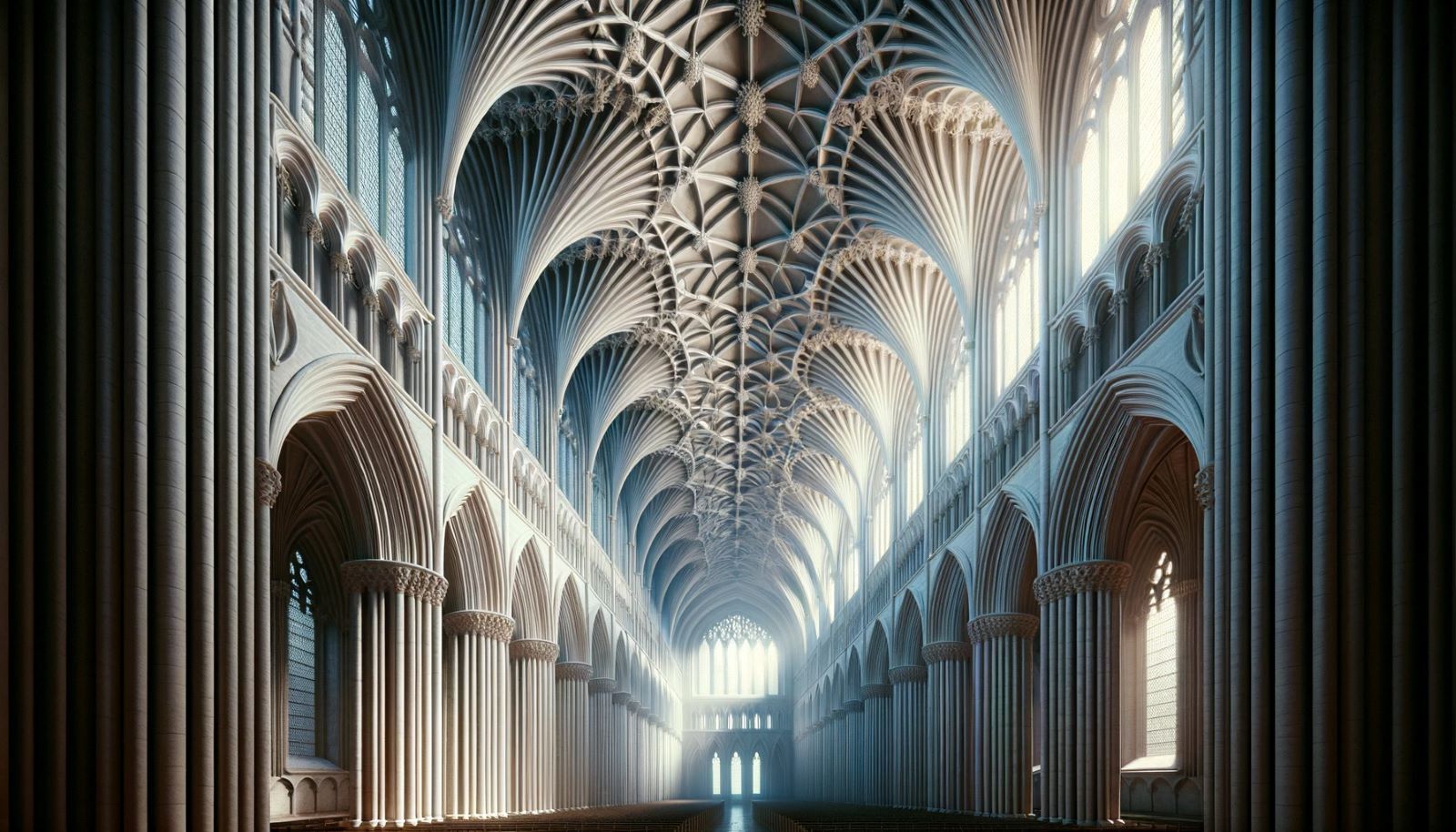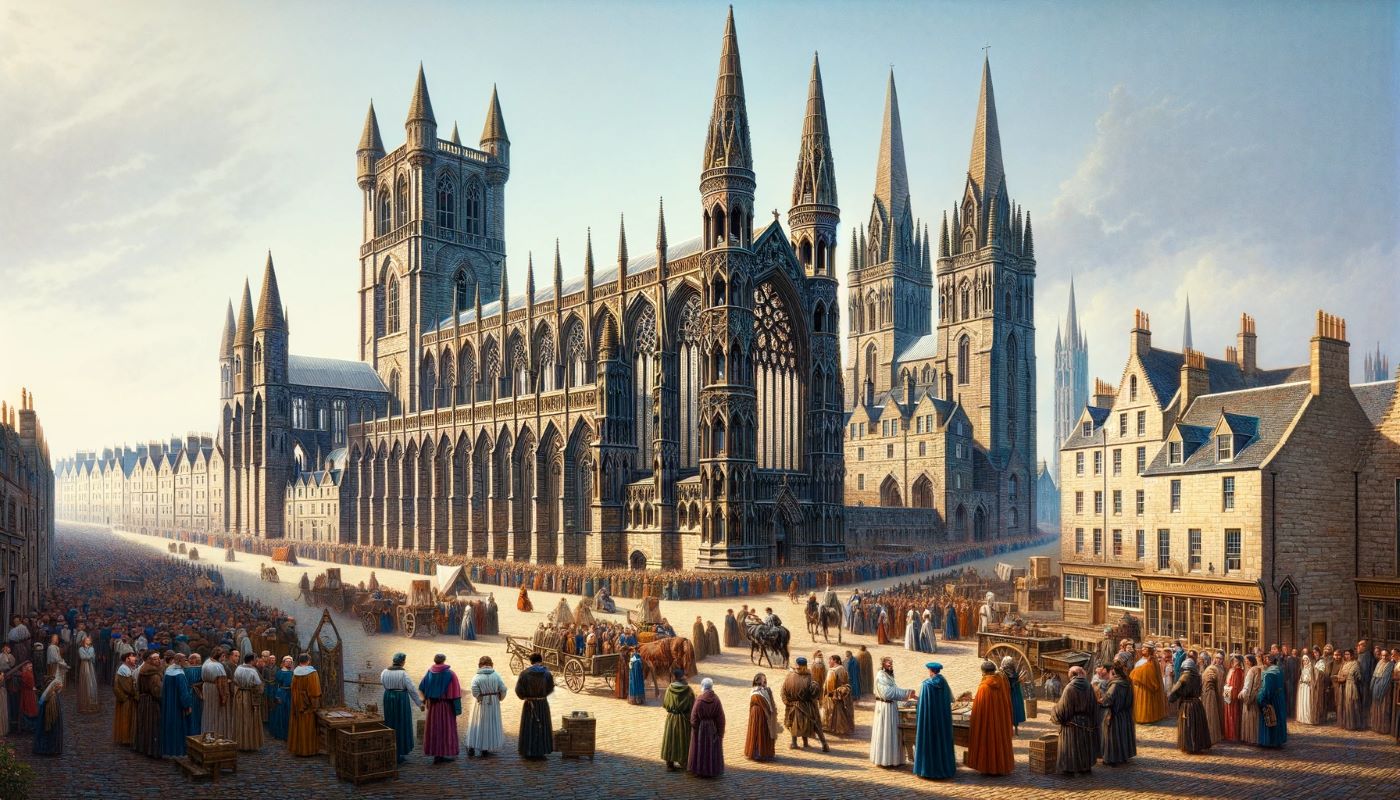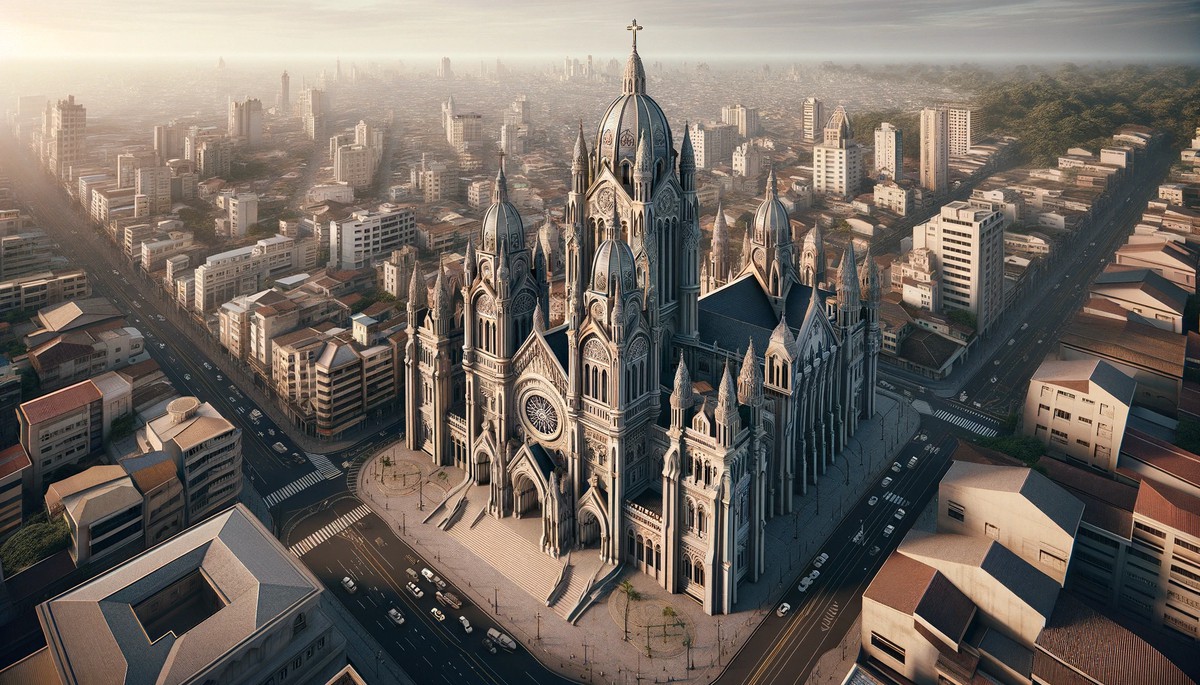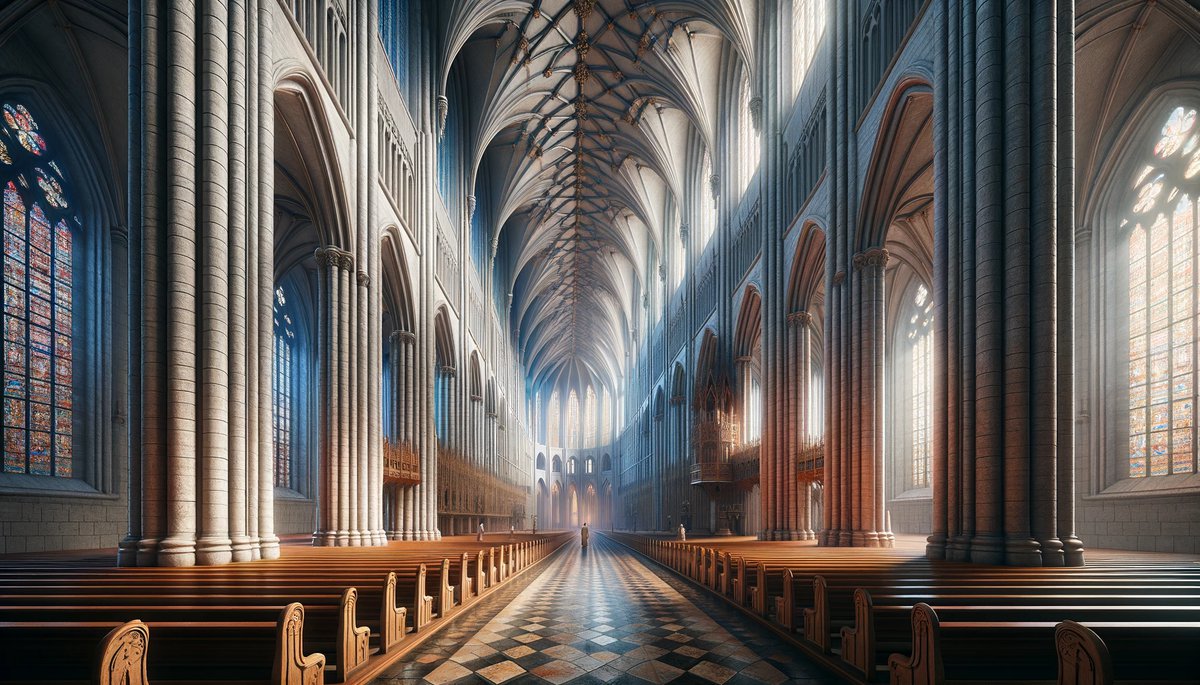Home>Arts and Culture>What Cathedral Did Justinian I Construct In Istanbul That Still Exists Today?


Arts and Culture
What Cathedral Did Justinian I Construct In Istanbul That Still Exists Today?
Published: February 16, 2024
Jason DeRose, Managing Editor at Christian.net, uses his expertise in religion and journalism to deepen understanding of faith's societal impacts. His editorial leadership, coupled with a strong academic background, enriches the platform’s diverse content, earning him recognition in both journalism and religious circles.
Discover the historic legacy of Justinian I with a visit to the iconic cathedral in Istanbul, a testament to the enduring influence of arts and culture. Uncover the timeless beauty of this architectural marvel.
(Many of the links in this article redirect to a specific reviewed product. Your purchase of these products through affiliate links helps to generate commission for Christian.net, at no extra cost. Learn more)
Table of Contents
Introduction
In the heart of Istanbul, Turkey, stands a timeless testament to the intersection of art, culture, and history. This architectural marvel, known as Hagia Sophia, has captivated the world for centuries with its grandeur and significance. Commissioned by the Byzantine Emperor Justinian I in the 6th century, this iconic structure has transcended time and witnessed the ebb and flow of empires, making it a symbol of resilience and cultural fusion.
Hagia Sophia, whose name translates to "Holy Wisdom," represents a convergence of diverse influences, blending elements of Byzantine, Roman, and Islamic architectural styles. Its construction marked a pivotal moment in history, signifying the grandeur and ambition of the Byzantine Empire under Justinian's rule. As one of the most enduring and influential monuments of the ancient world, Hagia Sophia continues to inspire awe and wonder, drawing visitors from across the globe to marvel at its magnificence.
This article delves into the captivating story of Hagia Sophia, exploring its construction, architectural features, historical significance, and the ongoing efforts to preserve its legacy. By unraveling the layers of history and artistry embodied within its walls, we can gain a deeper appreciation for this extraordinary structure and the enduring impact it has had on the cultural landscape of Istanbul and the world at large.
The Construction of Hagia Sophia
The construction of Hagia Sophia stands as a testament to the ambitious vision of Emperor Justinian I and the unparalleled craftsmanship of the architects and artisans who brought his dream to life. Commissioned in 532 AD, this monumental undertaking aimed to create a structure that would surpass all existing churches in grandeur and magnificence. To achieve this lofty goal, Justinian enlisted the expertise of two renowned architects, Isidore of Miletus and Anthemius of Tralles, who embarked on the monumental task of designing and constructing a cathedral that would leave an indelible mark on history.
The construction of Hagia Sophia was a feat of engineering and innovation, characterized by its vast dimensions and pioneering architectural techniques. The architects sought to create a structure that would inspire awe and reverence, reflecting the grandeur of the Byzantine Empire. The cathedral's design incorporated a central dome of unprecedented scale, supported by massive piers and semidomes, creating a sense of weightlessness and ethereal beauty. The use of innovative building materials, such as lightweight pumice stone and bricks, enabled the architects to achieve remarkable feats of engineering, pushing the boundaries of what was thought possible in architectural design.
The construction process itself was a marvel of coordination and skill, involving a vast workforce of laborers, craftsmen, and artisans. Skilled masons meticulously carved intricate designs into the marble columns, while master craftsmen adorned the interior with shimmering mosaics and ornate decorations. The construction of Hagia Sophia was a labor of love and dedication, with each element meticulously crafted to reflect the divine splendor of the cathedral.
Upon its completion in 537 AD, Hagia Sophia stood as a crowning achievement of Byzantine architecture, a symbol of imperial power and religious devotion. Its soaring dome and opulent interior left visitors and worshippers alike in awe, cementing its status as one of the most magnificent structures of the ancient world. The construction of Hagia Sophia not only reshaped the skyline of Constantinople but also set a new standard for architectural innovation and artistic expression, leaving an enduring legacy that continues to inspire admiration and wonder to this day.
Hagia Sophia's Architecture and Design
The architecture and design of Hagia Sophia represent a triumph of ingenuity and artistic vision, blending elements of Byzantine, Roman, and Islamic influences to create a structure of unparalleled grandeur and beauty. At the heart of its design is the monumental dome, an architectural marvel that has captivated visitors for centuries. Supported by massive piers and semidomes, the central dome creates a sense of weightlessness and seems to float effortlessly above the expansive interior space. This innovative use of architectural elements not only defied the limitations of construction technology at the time but also established a new standard for grandeur and magnificence in religious architecture.
The interior of Hagia Sophia is a symphony of light, space, and ornamentation. The vast expanse of the nave, adorned with marble columns and intricate designs, leads the eye upward toward the celestial dome, creating a sense of awe and transcendence. The interplay of light and shadow, filtered through the windows and reflecting off the golden mosaics, imbues the interior with an ethereal glow, evoking a sense of divine splendor and majesty.
The decorative elements of Hagia Sophia are a testament to the artistic prowess of the craftsmen and artisans who contributed to its embellishment. The interior walls and ceilings are adorned with shimmering mosaics, depicting religious scenes, imperial figures, and ornate geometric patterns. These intricate mosaics, composed of vibrant glass tesserae, create a visual tapestry that envelops visitors in a world of color and symbolism, conveying the spiritual and cultural significance of the cathedral.
The architectural and design elements of Hagia Sophia reflect a synthesis of diverse cultural influences, embodying the spirit of artistic innovation and cross-cultural exchange that defined the Byzantine Empire. Its architectural legacy has inspired countless imitations and reinterpretations, influencing the design of mosques, churches, and palaces across the centuries. The enduring allure of Hagia Sophia's architecture lies in its ability to transcend time and cultural boundaries, continuing to captivate and inspire all who behold its timeless beauty.
Hagia Sophia's Historical Significance
Hagia Sophia stands as a living chronicle of the tumultuous history of Istanbul and the empires that have left an indelible mark on its cultural landscape. From its inception as a Byzantine cathedral to its transformation into an imperial mosque and later a museum, Hagia Sophia has borne witness to the rise and fall of empires, religious and cultural shifts, and the enduring spirit of human creativity and resilience.
As the crowning achievement of Emperor Justinian I, Hagia Sophia symbolized the grandeur and ambition of the Byzantine Empire, serving as the focal point of religious and imperial ceremonies. Its construction marked a pivotal moment in history, signaling the Byzantine Empire's resurgence and reaffirming its status as a center of art, culture, and innovation. The cathedral's architectural splendor and opulent interior reflected the empire's wealth and power, leaving an indelible imprint on the city of Constantinople.
Following the conquest of Constantinople by the Ottoman Empire in 1453, Hagia Sophia underwent a transformative metamorphosis, evolving from a Christian cathedral to a Muslim mosque. The Ottomans added minarets, altered the interior decor, and imbued the structure with Islamic architectural elements, redefining its cultural and religious identity. This transition marked a significant turning point in the history of Hagia Sophia, underscoring its ability to adapt and endure amidst shifting political and religious landscapes.
In 1935, Hagia Sophia underwent yet another metamorphosis when it was converted into a museum by the Republic of Turkey under the leadership of Mustafa Kemal Atatürk. This transformation reflected a spirit of inclusivity and cultural preservation, recognizing the monument's significance as a symbol of shared heritage and artistic achievement. As a museum, Hagia Sophia became a beacon of cultural exchange, welcoming visitors from around the world to marvel at its architectural splendor and learn about its multifaceted history.
In 2020, Hagia Sophia once again captured global attention when it was re-designated as a mosque, sparking debates about its historical and cultural significance. This decision reignited discussions about the complex interplay of religion, heritage, and identity, underscoring the enduring relevance of Hagia Sophia in shaping contemporary discourse.
Hagia Sophia's historical significance transcends its physical presence, embodying the collective memory of diverse civilizations and serving as a symbol of resilience and cultural fusion. Its enduring legacy continues to inspire contemplation and dialogue, inviting us to reflect on the interconnectedness of history, art, and human experience.
Hagia Sophia's Preservation and Restoration
The preservation and restoration of Hagia Sophia represent an ongoing endeavor to safeguard this architectural masterpiece and ensure its longevity for future generations. As a monument of unparalleled historical and cultural significance, Hagia Sophia has been the focus of meticulous conservation efforts aimed at maintaining its structural integrity and preserving its artistic legacy.
The preservation of Hagia Sophia encompasses a multifaceted approach that addresses the challenges posed by time, environmental factors, and the complexities of its architectural composition. Preservation efforts have involved comprehensive assessments of the building's structural stability, the conservation of its iconic mosaics and decorative elements, and the implementation of measures to mitigate the impact of natural and human-induced threats.
One of the most critical aspects of Hagia Sophia's preservation is the conservation of its exquisite mosaics, which adorn the interior walls and ceilings with intricate designs and vibrant colors. These delicate works of art require specialized care to protect them from deterioration and ensure their enduring beauty. Preservation experts have employed advanced techniques in mosaic conservation, including meticulous cleaning, stabilization of support structures, and the application of protective coatings to safeguard these irreplaceable treasures.
In addition to the conservation of its artistic elements, the structural stability of Hagia Sophia has been a focal point of preservation efforts. The complex interplay of architectural elements, including the monumental dome and supporting structures, necessitates ongoing assessments and maintenance to prevent structural degradation. Preservation specialists have utilized cutting-edge technologies, such as 3D scanning and structural analysis, to monitor the building's condition and implement targeted interventions to address areas of concern.
Furthermore, the environmental impact on Hagia Sophia, including factors such as humidity, temperature fluctuations, and air pollution, has prompted the implementation of measures to mitigate these threats. Climate control systems, protective enclosures, and sustainable environmental management practices have been integrated into the preservation strategy to create a stable and conducive environment for the monument's long-term conservation.
The restoration of Hagia Sophia represents a delicate balance between honoring its historical authenticity and addressing the need for structural reinforcement and repair. Restoration efforts have involved the meticulous repair of damaged architectural elements, the consolidation of masonry, and the use of compatible materials to ensure that interventions harmonize with the original fabric of the building.
The preservation and restoration of Hagia Sophia stand as a testament to the enduring commitment to safeguarding humanity's cultural heritage. By embracing innovative conservation practices and drawing upon the expertise of multidisciplinary teams, Hagia Sophia continues to inspire awe and reverence, serving as a living testament to the resilience of art and architecture across the ages.















